The Divided Kingdom
Introduction
The chronology of the period of the divided monarchy in Israel, from the death of Solomon to the fall of Samaria, has been considered by many to be very difficult, and the books of Kings and Chronicles are often treated as if abounding with contradictions, copyist’s errors, and redactor’s mistakes and insertions. It is not to be expected that within the compass of a few articles, every phase of the chronology of this period can be thoroughly canvassed, but an attempt will be made to show that all of the Biblical data of the books of Kings and Chronicles, relating to this period, can be brought together into one complete system of dates. The very fact that it was found possible to so bring all the data into one complete chronology, produces a strong argument against those who claim that these books have suffered so at the hands of careless or dishonest scribes.
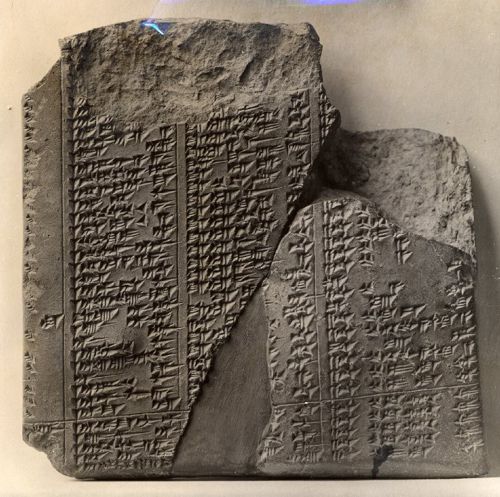
Fragment of an Assyrian eponym list from the reign of Ashurbanipal
The usual method now followed in making a chronology for the divided monarchy in Israel would seem to be to use the Assyrian eponym canon as foundation, and then to chisel down and alter the Scripture records to suit. This relegates the inspired word of God to a secondary position, and it is no wonder the books of Kings and Chronicles have fallen into considerable disrepute as a source of reliable chronological material. A “Bible Chronology,” to be just what the name implies, should, in the first place, be based wholly upon the Biblical record, and then take the Assyrian inscriptions as a foundation and supplement them with the Scripture data so as to still have an Assyrian chronology. In the second place, a Bible Chronology should be able to fully account for all of the chronological data in the Bible relating to the period being dealt with, for where it cannot account for some of this data it fails to be truly a Bible Chronology. If the chronologist rejects or alters any data to bring it into accord with his ideas, then at that point it becomes the chronologist’s chronology. The writer’s method has been to first take the Scriptures alone and to build up a purely Biblical chronology for the divided monarchy, then having formed a system of data which he believed to agree with all the Biblical data, to compare this with outside sources. As the system thus formed, we found it to be very nearly in agreement with the modern Assyrian and Egyptian chronologies, thus giving testimony to them as remarkably good. The points of agreement and disagreement, the later are surprisingly few, are dealt with in Part B. Part A deals solely with the Biblical data. Suggestions are made in Part B and Part C for correcting the Assyrian and Egyptian chronologies to bring them into complete harmony with the Biblical chronology worked out in Part A.
The information below is given as a reference to Chart I. If you have not seen this, please view it now. Click here for Table I in a new window
PART A
THE BIBLICAL DATA
Bible Use of Regnal Years
The number of years in a king’s reign is always given in whole numbers, fractions being omitted except when the reign is six months or less. Three such short reigns are given. Zimri for seven days, (I Kings 16:15) Zachariah for six months (II Kings 15:8) and Shallum for one month. (vs. 13). Any amount over six months was counted as a whole year, while fractions which did not exceed six months was dropped, and all reigns thus reduced to whole figures except such reigns as were six months or less as above stated. This is a most reasonable method of saving the reader from unimportant details as to months and days. The reign of Jehoram of Judah may be cited as a case where the reign was made up to the full year. It lasted from the fifth to the twelfth year of Joram of Israel, that is, about seven years, but evidently was somewhat over seven years and six months, for it is given in the text as eight years (II Kings 8:16,17,25) Thus this reign was made up to a whole number of years. An instance of a few months being dropped off of a reign to bring it down to a whole number is Menahem of Israel. He reigned from the thirty-ninth to the fiftieth year of Azariah of Judah, quite evidently from the latter part of the thirty-ninth to the early part of the fiftieth, so instead of being eleven years, was ten years and some months, and as the number of months was not over six, the reign is given as but ten years. (II Kings 15:17,21-23).
In naming the years of a king’s reign it is certain that the Hebrew Scriptures always reckon from the actual time of the accession. (Such a statement as that Abijam began to reign “in the eighteenth year of Jeroboam” (I Kings 15:1) is to be understood as meaning over seventeen but less than eighteen full years after Jeroboam’s accession. These regnal years were not made to coincide with the calendar years. One proof of this is cited from the reign of Josiah. Hee we read that “in the eighteenth year of king Josiah: the book of the law, the memory of which had all but perished during the great apostasy of the preceding kings, was discovered in the temple while certain repairs were being carried out (II Kings 22:3-20; II Chronicles 34:8-28).
The reading of this book had a very great effect upon both king and people and resulted in the greatest revival in the history of the kingdom of Judah. The king traveled up and down the countryside restoring the Jehovistic worship. Throughout the whole kingdom the idolatrous Levitical priest were put down, all the ancient high places of worship were defiled, idol groves cut down, evil houses destroyed, idolatrous altars of the royalty irretrievably smashed and broken, idol temples demolished, the priests of the high places of Beth-el were slain on their altars, and even the bones of previous priests were dug from their graves and burnt upon the altars. (II Kings 23:1-20).
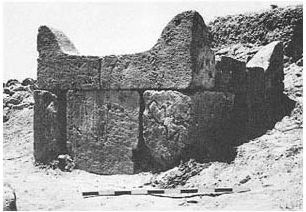
Horned altar found near Bethel
This nation-wide campaign could not have been accomplished in a short time, it must have occupied several months at the very least. Yet in both Kings and Chronicles, the last event in this great campaign is the keeping of the Passover on the fourteenth day of the first month, and it was then still the eighteenth year of Josiah’s reign. (II Kings 23:21-23; II Chronicles 25:1,19) From this it is most clear that Josiah’s eighteenth year, after covering a good portion of the one calendar year wherein the reformation was carried out, extended into the next calendar year at least as far as the fourteenth day of the first month. No clearer proof need be asked that the years of a king’s reign were counted from the actual date of accession, and that the regnal years were not made to coincide with the calendar year. Several other passages might be cited as additional proof, and that the Jews used the same method in reckoning reigns of even Gentile monarchs, but the above must suffice in this article.
It may be mentioned that the months of the Hebrew dates are invariably the usual calendar months, the first month corresponding with our April, the second with May etc.
The Chronological Data in Kings and Chronicles
The books of Kings and Chronicles in the Bible are not mere histories of the Hebrews; they were written with the object of recording the story of Jehovah’s dealings with his covenant people, Israel. Much history has been omitted as not pertinent to this purpose, so that the books of Kings and Chronicles which we posses are not complete histories, in fact they do not even claim to be full copies of the book or books originally called by the same names.
(Footnote: The Book of Kings constantly refers to a “Book of Chronicles” and Chronicles to a “Book of the Kings.” On turning to the books we have under these names, it is often found that the part referred to has been omitted. Thus the books we possess clearly are not the ones referred to, or more than shortened copies of them. For instance, I Kings25:31 refers the reader to Chronicles for the rest of the acts of Nadab. Our Chronicles does not even mention his name! The same is true of Elah (I Kings 26:14) Zimri (vs. 20) and others. Similarly, II Chronicles (33:18) refers to a “Book of Kings” for a record of Manasseh’s prayer, not to be found in our Book of Kings. This same book contained also the genealogical lists (I Chronicles 9:1). It has been supposed that the titles “book of Kings of Israel” and “book of the chronicles of Judah” etc., were various names for the state annals.)
Both books keep referring to authoritative sources of the same titles where “the rest of the acts” of each king might be found. This language clearly shows that the books we posses do not profess to contain all the acts of these kings, but a selection only of them. Admittedly, then, the books of Kings and Chronicles in the Bible are abbreviated copies, omitting what was irrelative to the history of Jehovah’s dealings with his chosen nation. This in no way reflects upon the doctrine of inspiration, for the Holy Spirit himself is the authority who selected which events to include in the history, and which to omit, so that the whole is His design. With these abbreviated copies in our hands it is not surprising that difficulties are encountered in an attempt to construct the chronology of those times for which task rather fuller information is required. It is not the primary purpose of inspired history to supply a complete chronology, and our difficulties are not from incorrect statements, but form our lack of complete information on this subject. This explains why there are apparent chronological errors in these books - they so appear only because of what we do not know of the history of the Hebrew monarchs. Therefore, no data in these books should be ignored, or hastily explained away as a scribal error, especially when it was common with the Jews to use great care to guard their sacred books from just such errors being made.
The scheme of Biblical chronology for the period of the divided monarchy as given in Table I has been worked out from the data of Kings and Chronicles, and hilt up from the year 701 B.C. as the date of Sennacherib’s invasion of Judah near the close of Hezekiah’s fourteenth year. The Table begins with the death of Solomon in 957 B.C. It therefore covers a period of 256 years. From Solomon’s death to Jehu’s accession is 103 years (957 - 854 B.C.); from there to the fall of Samaria is 133 years, or 153 years to Sennacherib’s invasion in 701 B.C.
The use of all the data of King’s and Chronicles has been accomplished largely by overlapping the reigns of a number of the kings. In some cases the Biblical account clearly indicates that there was a joint ruler-ship of a father and son, and as stated in a former article, numerous cases of co-regencies need cause no surprise since the Hebrew monarchs had before them the example of David, founder of the Judaic dynasty, who saw his son Solomon crowned and seated upon his throne ere he died. To attempt to construct a chronology for this period without overlapping reigns, it becomes necessary to insert blank interregnums and to ignore some of the chronological passages.
Overlapping Reigns
In Table I, which will be found largely self-explanatory, nine overlapping reigns are given in the history of Judah and seven in that of Israel.
| The overlapping reigns of Judah | Years | The overlapping reigns of Israel | Years |
|---|---|---|---|
| Abijam jointly with Asa | 11 years | Jeroboam I jointly with Nadab | 1 ½ years |
| Asa jointly with Jehoshaphat | 2 ½ years | Baasha jointly with Elah | 9 years |
| Jehoshaphat jointly with Jehoram | 6 years | Tibni and Omri rival kings | 4 years |
| Jehoram jointly with Ahaziah I | 1 ½ years | Omri jointly with Ahab | 1 ½ years |
| Ahaziah I jointly with Ahaziah II | ½ year | Ahaziah jointly with Joram | 1 year |
| Amaziah and Uzziah, overlapping lasting | 22 years | Jehoahaz jointly with Joash | 3 years |
| Uzziah jointly with Jotham | 16(?) years | Joash jointly with Jeroboam II | 11 years |
| Jotham jointly with Ahaz | 8 years | ||
| Ahaz jointly with Hezekiah | 11 years |
These overlappings need some explanation and are dealt with separately in the succeeding paragraphs and the Scripture references are given then. Those of Judah are treated first.
## Overlapping Reigns of Judah
**1. Abijam and Asa** An eleven year joint rulership of Abijam (Abijah) recorded in Scripture, 940 - 937 B.C., and the beginning of Asa's forty-one year reign, 925-885 B.C. This is done to make Asa's thirty-sixth year, 902 - 1 B.C., reckoned from the beginning of his joint rulership coincides with the end of the reign of Baasha of Israel (see II Chronicles 15:19, 16:1) One effect of inserting this co-regency is that Abijam's death, (926 BC) instead of the reverse order, as is usually given in Chronologies. This agrees with the implication of II Chronicles 13:20-21; "Neither did Jeroboam recover strength again in the days of Abijah; and the Lord struck him, and he died. But Abijam waxed mighty..." The impression left by this passage is that Abijam continued to wax mighty after Jeroboam's death.
**2. Asa and Jehoshaphat** Asa's reign of just under forty one years, 926-885 BC (I Kings 15:10; II Chronicles 16:13), overlapped Jehoshaphat's twenty-five years reign 887 - 862 BC, by over two years. This is made certain by a deficiency of over two years fir Jehoshaphat's reign, in the cross-references linking the chronologies of Judah and Israel. Late in Jehoshaphat's seventeenth year, 868 BC. (reckoned from Asa's death in 885), Ahaziah the son of Ahab began his two year reign in Israel 868-866 BC. (I Kings 23:51). He was succeeded by his brother Joram (II Kings 1:17) and in this Joram's fifth year, 862 BC, Jehoshaphat's reign terminated (II Kings 8:16). From Asa's death in the latter part of the Vernal year 885 BC to the end of Jehoshaphat's reign in 862 BC makes nearly twenty-three years for Jehoshaphat instead of twenty-five, about two and a half years short. At the beginning of thee two and a half years, in Asa's thirty-ninth year, 887 BC, Jehoshaphat became co-regent. This was the date when Asa became diseased in his feet, and this sickness explains the co-regency. The disease lasted until Asa died in his forty-first year, 885 BC. (II Chronicles 16:12-13), and Jehoshaphat was the acting regent during this time.
**3. Jehoshaphat and Jehoram** The joint ruling of Jehoram (Joram) with his father Jehoshaphat is now generally acknowledged. This co-regency lasted six years 868-862 BC and is indicated by the two dates given for the beginning of Johoram's reign over Judah; the first one, one year before the accession of Joram of Israel (II Kings 8:16). In the latter reference it is not said Jehoshaphat died when Jehoram became sole regent, but we have the peculiar statement "Jehoshaphat being then king of Judah." Possibly he abdicated in his son's favor, (Compare II Chronicles 21:3 "the kingdom gave he to Jehoram.")
**4. Jehoram and Ahaziah I** There was a short-co-regency of about a year and half of Jehoram with his son Ahaziah I, beginning in the eleventh year and ending in the twelfth year of Joram of Israel, and is dated 856 - 855 BC (II Kings 9:29, 8:25). This co-regency would be occasioned by Jehoram's violent disease from which he died after two years (II Chronicles 21:19)
**5. Ahaziah I with Ahaziah II** The marked differences of Kings and Chronicles in the accounts of the death of Ahaziah king of Judah have been declared irreconcilable, and various attempts have been made to force them into agreement. The fact remains, however, that they are irreconcilable and the right explanation is that the two accounts are dealing with different persons. A careful examination of Scripture here will reveal the fact that there were two Ahaziahs, both reigning in Judah at the same time, the one the nephew of the other. The study of the reigns of these two kings itself demonstrates how greatly our copies of Kings and Chronicles are shorted and abbreviated histories. It is this liberal abbreviation which makes it difficult to distinguish between the two kings, and the reader's patience is asked for a little while as these accounts are examined. In Kings we learn that when Ahaziah saw Joram of Israel slain by Jehu in Jezreel, he fled westward in his chariot, hotly perused by Jehu's soldiers, who mortally wounded the king "a the going up to Cur whish is by Ibleam", but he continued his flight as far as Megiddo, "and died there", after which his own servants carried his body by the sea coast route to Jerusalem, and buried him in the royal sepulchers "with his fathers" (II Kings 9:27-28) This Ahaziah was smitten before that Jehu, while on his way to Samaria, met and slew the princes of Judah (II Kings 10:12-14). The account in Chronicles is that after Jehu had slain the princes of Judah he sought for a King Ahaziah of Judah in Samaria, and there they found him hiding, and there, in Samaria Jehu and his servants slew him and buried him (II Chronicles 22:8-9) This Ahaziah died at least a day later than the first one, for II Kings 10:8-9 records the passing of the night. The reason why Jehu and his servants honored the second Ahaziah with a burial service is: "Because, they said, he is the son of Jehoshaphat, who sought the Lord with all his heart" (II Chronicles 22:9). This is the key which opens to us the explanation: their words plainly show us that this Ahaziah was the immediate son of the venerated Jehoshaphat, not his grandson through the despised Jehoram. They would not have spoken of the son of the notoriously wicket Jehoram this way. The Ahaziah of II Kings 8:25 was certainly Jehoram's son, and thus we are left with but one conclusion, there were two Ahaziahs, one Jehoshaphat's son, the other Jehoram's son. The account in Kings is of the son of Jehoram (Ahaziah I) that of Chronicles deals partly with the same king, and partly with Jehoshaphat's son (Ahaziah II). The following contrasts will make more vivid the difference in the account of these two kings.
| Ahaziah I | Ahaziah II |
|---|---|
| - was Jehoram's son | - was Jehosphephat's son |
| - began to reign at 22 years of age | - began to reign at 42 years of age |
| -wounded near to Ibleam | - was caught in Samaria |
| -fled to Megiddo and died there | -put to death in Samaria |
| - buried in Jerusalem | - buried in Samaria Second Column Item |
| - by his own servants | -by Jehu's servants |
| - died before Judean princes slain | - died after Judean princes slain |
To avoid confusion it is necessary to remember that both of these kings are known by more than one name, and will be found on Table I distinguished thus:
- Jehoram’s son = Ahaziah I, Jehoahaz I, or Azariah I
- Jehoshaphat’s son = Ahaziah II or Azariah II
Jehoram was Jehoshaphat’s eldest son (II Chronicles 21:3) and as he was thirty two years old when he began to reign (as co-regent) in 868 BC his birth was in 900 BC. This was the same year that Omri became king of Israel. A few years later, about 898 BC Omri, to strengthen himself, appears to have contracted an alliance with Judah, for his daughter Athaliah was given to the heir of the Judean throne, Jehoshaphat. II Chronicles 21:2 gives a list of Jehoshaphat’s sons, of some of which we may believe Athaliah was the mother. Two are named “Azariah.” The first of these is the Ahaziah (II) who later came to the Judean throne as co-regent with Jehoram’s son. His birth can be dated by his age given in II Chronicles 22:2 as occurring in 897 BC.
II Chronicles 21:4 tells us Jehoram “slew all his brethren” when he became king, but that the word “all” may have exceptions in such cases is shown by similar statements in II Chronicles 22:10-11 and Judges 8:30-31, 9:5,18,24, where in both instances, one escaped. So here Azariah must have eluded his brother Jehoram when his brethren were slain, and presumably fled out of Judah, to return after Jehoram’s death and reign as co-regent with the other Ahaziah, his nephew. We may see in his mother Athaliah, then the Queen-mother, the power that thus brought him back from exile, for he followed her councils. (II Chronicles 22:3)
At the beginning of Jehoshaphat’s reign, 885 BC, relations with the northern kingdom were temporarily strained (II Chronicles 17:1) but it is not long before we read that he “joined affinity with Ahab” king of Israel (II Chronicles 18:1). It was at this time that Jehoshaphat’s son Jehoram received for his wife “the daughter of Ahab” not to be confused with Athaliah “the daughter of Omri, who was Jehoshaphat’s wife. (II Kings 8:18, II Chronicles 21:6)
Since Jehoram’s son, Ahaziah I, was twenty two years old when he began to reign in 855 BC (II Kings 8:26) his birth was in 877 BC not many years after Jehoshaphat’s alliance with Ahab. Ahaziah’s name at first was Jehoahaz, and he was the youngest son (II Chronicles 21:17). Upon his father’s death he became the sole regent. The Queen-mother, Athaliah, was his grand-step-mother, but she is called “his mother: after the Hebrew custom. (Asa’s grandmother is called “his mother” in the same way, cf II Chronicles 11:20-22; I Kings 15:1-2, 9-10, 13; II Chronicles 25:16). With this Ahaziah I, Azariah the son of Jehoshaphat became co-regent, under the name Ahaziah II, being guided by his mother’s counsels. (II Chronicles 22:2-4). Thus these two kings of the same name reigned together, a condition of affairs which might well be expected to produce confusion in the reader’s mind. This joint regency continued a little over half a year. Then both of these kings, in 854 BC went to help Joram of Israel in his war at Ramoth-gilead against Hazael of Syria (II Kings 8:28, II Chronicles 22:5). Joram was seriously wounded and returned to Jezreel to be healed. Soon after this, Ahaziah I, Jehoram’s son, went down from Ramoth-gilead to visit Joram in Jezreel and when Jehu conspired against Joram, this Ahaziah received his death wound while fleeing from Jezreel, as already told. (II Kings 8:29, 9:21-28; II Chronicles 22:6-7, in the latter reference he is also called “Azariah.”) Meanwhile Ahaziah II, Jehoshaphat’s son, had in some way reached Samaria, where Arab’s household was residing (II Kings 10:1-7) and here he hid. Jehu, however, presently came to the city, searched for Ahaziah II, and he was caught and put to death (II Chronicles 22:9).
In II Chronicles 22 the parts dealing with each Ahaziah are as follows: Ahaziah I verses 1, 6-8 and Ahaziah II, verses 2-5, 9.
6. Amaziah and Uzziah
Amaziah’s reign overlapped that of his son Uzziah by twenty-two years. During this period 800 - 778 BC Uzziah was reigning in Jerusalem while Amaziah lived in the city of Lachish.
To understand the peculiar circumstances of this long overlap, it is necessary to go back to the accession of King Jehoash of Judah, and review the events leading up to this situation. During six years of his early life, Jehoash was hidden in the Temple in Jerusalem while the tyrannical Queen Athaliah, daughter of Omri, held the throne. In the seventh year, 848 BC Jehoiada the high priest engineer the sudden corronation of the young boy Jehoash, and Athaliah was slain. (II Kings 11). Thus was the reign of the seven year old king inaugurated under the protection of the priests. As long Jehoiada lived Jehoash was guided by his counsels (II Kings 12:2) Thus the priests gained a strong influence over their king which lasted through several reigns. The high priest Jehoiada exerted his influence over King Jehoash in favor of the national religion, the worship of Jehovah, in which he evidently was backed by the people. We read, “Jehoiada made a covenant between Jehovah and the king and the people, that they should be Jehovah’s people; between the king also and the people” (II Kings 11:17) The people themselves gladly torn down the temple of Baal and slew Mattan the priest of Baal.
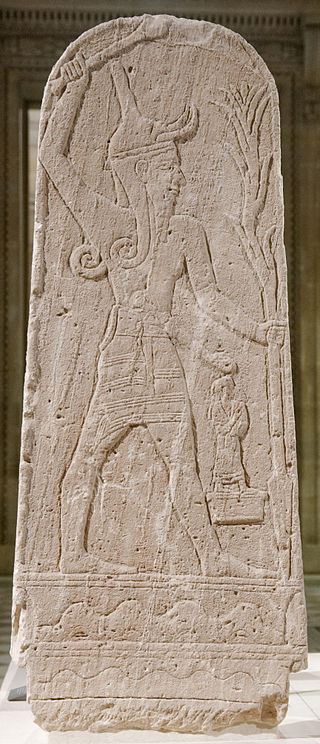
Statue of Baal
But later, after the death of the aged high priest Jehoiada in the later part of Jehoash’s reign of forty years, 848 - 807 BC., another voice was heard, a voice contrary to that of the priests and people. The princes persuaded the king to forsake the national religion for idolatry. (II Chronicles 24:17ff) As might be expected, strong protests came form the priests, and some of Jehoiada’s sons perished at the hands of the ungrateful king; one was stoned to death when he prophesied against the king. This massacre of Jehoiada’s sons found such disfavor among the king’s own servants, that, when he was suffering from the wounds received in a war with the Syrians, two of them attacked him in his bed and slew him “for the blood of the sons of Jehoiada the priest” (II Chronicles 24:25).
Amaziah then came to the throne in 807 BC. As he was at first willing to follow the worship of Jehovah, “the kingdom was confirmed in his hand” by the priests and people. But Amaziah also, after his Edomite campaign, turned from the national religion, so strongly favored by the priests and the people, and worshipped instead the gods of Edom. (II Chronicles 25:14) Directly after this change of religion Amaziah was severely defeated in a war he himself had provoked with the King of Israel. Upon this Amaziah became so unpopular that the people (most likely led by the priests) revolted as we are told in II Chronicles 25:27; “Now after the time that Amaziah did turn away from following Jehovah they made a conspiracy against him in Jerusalem; and he fled to Lachish…” However, the people had now found a king to their taste: “Then all the people of Judah took Uzziah, who was sixteen years old, and made him king in the room of his father Amaziah” (II Chronicles 26:1)
Now the date of this conspiracy was certainly not at the end of Amaziah’s reign. It was when he turned away from following the Lord, which he did while Joash was still reigning in Israel (II Chronicles 24:14; 17-20) and Amaziah lived fifteen years after Joash died (vs. 25). By this alone was can see that the conspiracy and coronation of the young Uzziah was more than fifteen years before Amaziah died. To get the exact date the cross references to the reigns of the Israelite kings need to be used. Amaziah reigned twenty-nine years, 807-778 BC., and then at the end of this time Uzziah reigned alone, beginning in the twenty seventh year of Jeroboam II (II Kings 25:1, Uzziah = Azariah III). Jeroboam II therefore began to reign in 804 BC, and his forty-one years (II Kings 24:2) ended in 763 BC. This latter date we read was Uzziah’s thirty-eighth year (II Kings 25:8) and this in turn gives us 800 BC as Uzziah’s first year. This therefore must be the date of the conspiracy and Uzziah’s coronation by the people; it was twenty-two years before Amaziah’s death in 778 BC. Also this date 800 BC comes in the life time of Joash king of Israel, who did not die until 793 BC. (See Table I)
Now when the conspiracy was made against Amaziah in 800 BC we are told he fled to Lachish. Here he was suffered to remain, a sort of exile tough still thought of as the rightful king, apparently unmolested so long as he was quiet and did not disturb the kingdom. But at the end of twenty-two years, in 778 BC some trouble arose, what we are not told, we only know that “they sent to Lachish after him, and slew him there. And they brought him upon horses, and buried him with his fathers in the city of Judah.” (II Chronicles 25:27-28). This was twenty-nine years after his accession, the whole period being counted in his reign. He ruled but seven years before the conspiracy.
The first event of which we read in Uzziah’s reign supplies a clear indication that his rule overlapped his father’s reign. “He built Eloth….after that the king slept with his fathers” (II Chronicles 26:2) The implication is clearly made that he was reigning before the king “slept with his fathers” but did not build Eloth until afterward.
This twenty-two year overlap comes just where an interregnum is often inserted: this chronology is therefore much here than some others.
7. Uzziah and Jotham
No key is given in the Book of Kings by which to ascertain the length of the co-regency of Jotham with his father, Uzziah; though the co-regency is mentioned in II Kings 25:5, as well as in II Chronicles 26:21. However, II Chronicles 26:17 speaks of Jotham as if he were a contemporary of Jeroboam II. Jeroboam’s death was fifteen years before Uzziah’s: the co-regency may therefore have covered more than these fifteen years, so in Table I Jotham’s co-regency is dated as beginning in 764 BC., sixteen years before Uzziah died in 748 BC., and one year before Jeroboam II died. This assumed date is accompanied by an interrogation mark in the Table.
8. Jotham and Ahaz
Already told in a previous article, there was a joint regency of Jotham and his son Ahaz, lasting eight years, 740 - 732 BC. Scripture references will be found there. (The Chronology of the Book of Isaiah).
Ahaz is called “Jehoahaz” in the Assyrian inscriptions, and is therefore the second king of that name. Hence he is put in Table I as Jehoahaz II.
9. Ahaz and Hezekiah
This co-regency also was fully dealt with in the previous article. It lasted for eleven years, from late in 727 BC or early in 726, to early in 715 BC.
Overlapping Reigns of Israel
Next we turn to the seven cases of overlapping reigns in the history of the northern or ten-tribe kingdom of Israel. Four of these are inserted in this chronology solely to bring the reigns of the Israelite kings into harmony with the cross dating linking them to the chronology of Judah. One case (No. 3) is definitely declared to be a period of rivalry for the throne; another (No. 5) when the ruling monarch was disabled by an accident, and yet another (No. 1) appears to have been the result of the king falling sick and his son taking the reigns of government.
1. Jeroboam I and Nadab
Jeroboam’s reign is stated to have lasted twenty-two years (I Kings 14:20) but evidently was little more than half a year over twenty-one, for it began the same year as Pehobam’s 957 BC and ended in the second year of Asa’s co-regency, early in 936 BC (I Kings 12:1-20; 15:25). Little more than half a year later, Nadab who succeeded his father Jeroboam was assassinated by Baasha “in the third year of Asa,” that is, late in 935 BC (I Kings 15:28). Yet Nadab is said to have reigned two years (I Kings 15:25). Part of his two year reign must therefore have overlapped that of Jeroboam’s and so is dated as from 937 to early 935 BC.
II Chronicles 13:20 tells us that after Jeroboam’s war with Abijah, king of Judah, (which fell between 940 and 937 BC) he was struck by the Lord and died. This is understood to mean that Jeroboam became the prey of some disease to which he succumbed soon after. The very natural conclusion is that Nadab his son became the ruler when Jeroboam was struck down by the disease in 937 BC., and reigned jointly until his father died early in 935 BC, a co-regency of one and a half years.
2. Baasha and Elah
Baasha seized the Israelite kingdom early in the third year of Asa of Judah (I Kings 15:28), in the latter part of the Vernal year 935 BC and reigned twenty-four years (vs. 33) to about the middle of the Vernal year 911 BC., Asa’s twenty-sixth year. Eiah, Baasha’s son then began to reign (I Kings 16:8). Yet nine years after this, late in 902 BC at the transition from the thirty-fifth to the thirty-sixth year of Asa, Baasha himself was still reigning in Israel (II Chronicles 15:19; 16:1). Evidently during these dine years, 911 -902 BC Elah was co-regent with Baasha until Baasha died shortly after the time his kingdom was attacked by Ben-hadad I, king of Syria.(II Chronicles 16:1-5; I Kings 15:17-21). Elah then reigned two years, 902 - 900 BC. (I Kings 16:6, 8), after which Zimri seized the throne in the twenty-seventh year of Asa’s sole regency (I Kings 16:8-10)
3. Tibni versus Omri
When the news reached the Israelite army, then encamped before Gibbethon fighting against the Philistines, that Zimri had slain the king, they made Omri, who was their captain king that same day. Omri proceeded at once to the capital city in Tirzah and besieged Zimri. When Zimri saw that the city was being taken he burnt the palace upon himself and died, (I Kings 16:21-22). Omri then began his undisputed reign in the thirty-first year of Asa’s sole regency, 896 BC., four years after he was crowned by the army at Gibbethon. (Vs. 23). However, his reign of twelve years began at the earlier date, 900 BC. Verse 23 of I Kings 16 is a clear example of the way two dates for the beginning of a king’s reign are used in a single sentence without any effort to distinguish them plainly to the reader.
4. Omri and Ahab
Omri’s reign of a little over eleven and a half years, beginning early in Asa’s twenty-seventh year and the latter part of the Vernal year 900 BC., ended in the latter part of Asa’s thirty-eighth year, about the middle of the year 888 BC (I Kings 16:23, 28-29). Ahab then succeeded Omri and in Ahab’s forth year the latter part of 885 BC, Jehoshaphat became sole regent in Judah (I Kings 22:41). In Jehoshaphat’s seventeenth year, early in the latter half of 868 BC, Ahab died and was succeeded by his son Ahaziah (I Kings 22:51). Now from the death of Omri, 888 BC., to the death of Ahab 868 BC gives Ahab a reign of but slightly over twenty years, yet we are told he reigned twenty-two years. (I Kings 16:29). His reign must therefore have overlapped the end of his father’s by about a year and a half. His co-regency thus began about the end of 890 or the beginning of 889 BC.
5. Ahaziah and Joram
Ahaziah succeeded Ahab his father near the close of Jehoshaphat’s seventeenth year, and he reigned two years, 868 - 866 BC. (I Kings 22:51). As he died childless, his brother Joram or Jehoram was next upon the throne. Two years from near the end of Jehoshaphat’s seventeenth year would be his nineteenth year (866), yet Joram began to reign a year before this, in Jehoshaphat’s eighteenth year, 867 BC (II Kings 3:1). From this it is clear that Joram’s reign overlapped Ahaziah’s by about a year. This overlap is readily explained when we remember that Ahaziah was injured by falling down through a lattice, and did not recover from these injuries, but died a while later. (II Kings 1:2-4, 15-17). While Ahaziah was thus incapacitated, Joram his brother reigned as co-regent, 867 - 866 BC. Joram’s twelve year reign is reckoned from the latter date, 866 BC.
6. Jehoahaz and Joash
Jehoahaz and his son Jehoash or Joash appear to have reigned together for about three years. Jehoahaz reigned seventeen years, 826 0 8-9 BC., beginning in the twenty-third year of Jehoash of Judah (I Kings 8:1). His son Joash began his reign in the thirty-seventh year of Jehoash of Judah (II Kings 13:10), which was 812 BC, three years before his father Joash died in 809 BC.
7. Joash and Jeroboam II
Joash reigned sixteen years, 809 - 793 BC., (II Kings 8:10) and was then succeeded by Jeroboam II in the fifteenth year of Amaziah (II Kings 14:16, 23). It was fifteen years after this that Amaziah died, as both Kings and Chronicles emphatically state (II Kings 14:17; II Chronicles 25:25) which would be 778 BC. Yet in this year when Uzziah became the sole regent upon Amaziah’s death, we are told it was the twenty-seventh year of Jeroboam II (II Kings 15:1). This places Jeroboam’s accession in 805 BC, eleven years before the death of his father Joash in 793 BC. During these eleven years there must have been a joint regency. Jeroboam’s forty-one year reign is reckoned from the earlier date, 804 and lasted until 763 BC.
Conclusion
This completes our list of overlapping reigns. When these overlappings are accepted, the apparent chronological errors of the books of Kings and Chronicles, within this period from Solomon’s death to the reign of Hezekiah, completely vanish, and a truly Scriptural chronology is gained in which none of the Biblical data is either ignored or altered in the least. There remains no need to imagine any scribal errors - which after all were not so likely to occur as some would have had us believe.
Copyright David J Gibson, CanBooks 2004 2019
Dates for the reigns of the other kings not given in the text of this article will be found in Table I. These are so easily reckoned, when the overlaps are explained as above, that no further treatment is necessary.
In Part II of this study, the chronology given in Table I will be compared with the Assyrian eponym cannon and with Egyptian dates.





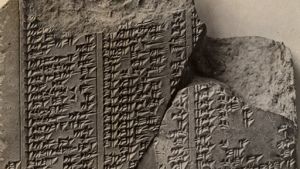




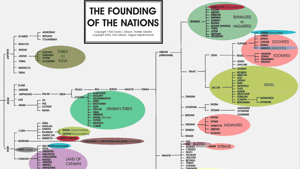

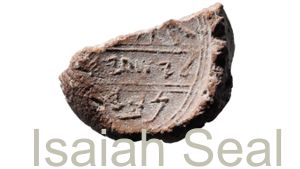
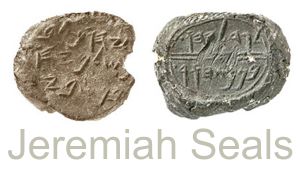


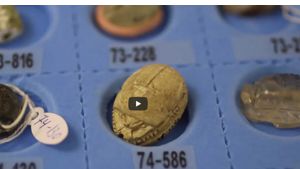




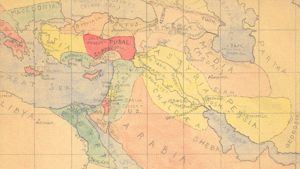


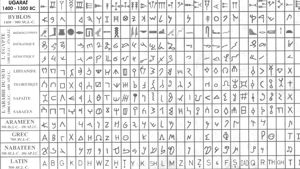
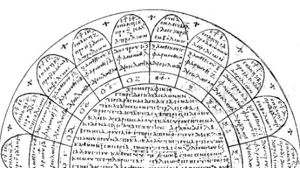
Page Discussion
Membership is required to comment. Membership is free of charge and available to everyone over the age of 16. Just click SignUp, or make a comment below. You will need a user name and a password. The system will automatically send a code to your email address. It should arrive in a few minutes. Enter the code, and you are finished.
Members who post adverts or use inappropriate language or make disrespectful comments will have their membership removed and be barred from the site. By becoming a member you agree to our Terms of Use and our Privacy, Cookies & Ad Policies. Remember that we will never, under any circumstances, sell or give your email address or private information to anyone unless required by law. Please keep your comments on topic. Thanks!